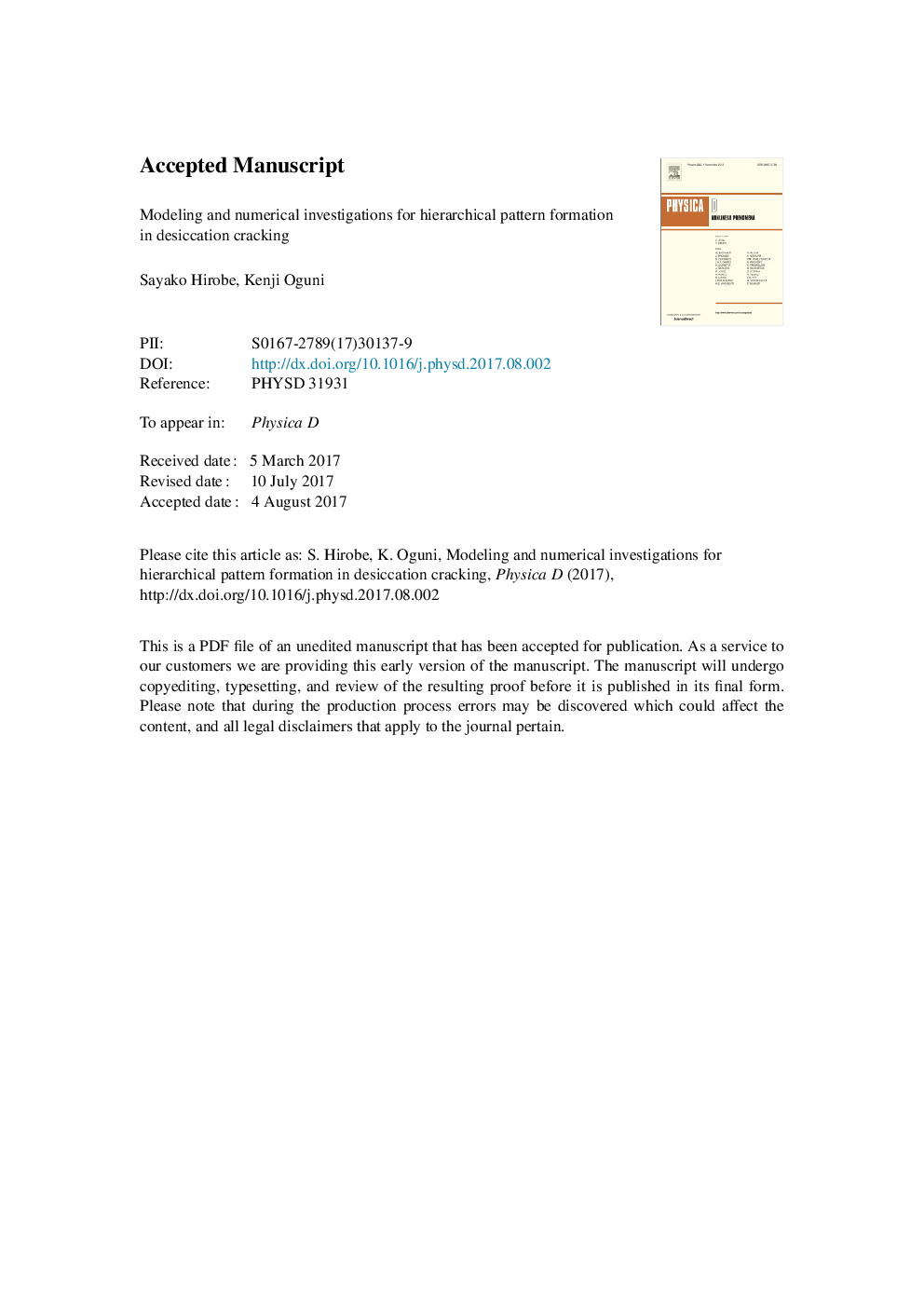| Article ID | Journal | Published Year | Pages | File Type |
|---|---|---|---|---|
| 5500206 | Physica D: Nonlinear Phenomena | 2017 | 34 Pages |
Abstract
Desiccation cracking and its pattern formation are widely observed in nature. The network of the surface cracks forms polygonal cells with typical size. This crack pattern is not formed in a simultaneous manner, instead, formed in a sequential and hierarchical manner. The strain energy accumulated by the heterogeneous drying shrinkage strain is systematically released by the cracks. In this sense, desiccation cracking phenomenon can be regarded as a typical example of the pattern formation in the dynamical system with dissipation. We propose a mathematical model for the pattern formation in desiccation cracking with emphasis on the emergence of the typical length scale with the typical geometry resulting from the hierarchical cell tessellation. The desiccation crack phenomenon is modeled as the coupling of desiccation, deformation, and fracture. This coupling model is numerically solved by weakly coupled analysis of the desiccation process and the deformation/fracture process. The basic features of the desiccation crack pattern and its formation process reproduced by the numerical analysis show reasonable agreement with experimental observations. This agreement implies that the proposed coupling model properly addresses the fundamental mechanism for the hierarchical pattern formation in desiccation cracking.
Related Topics
Physical Sciences and Engineering
Mathematics
Applied Mathematics
Authors
Sayako Hirobe, Kenji Oguni,
